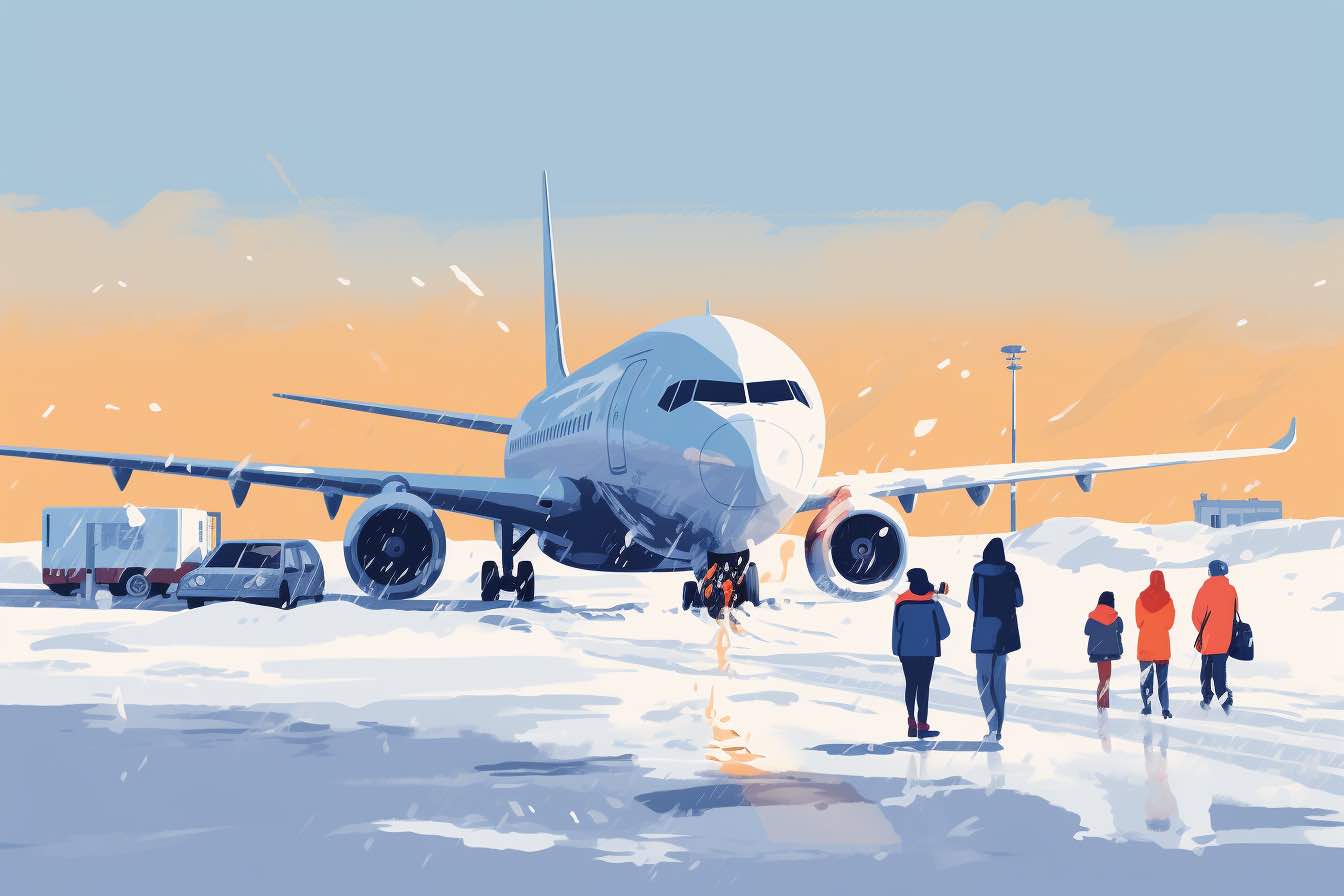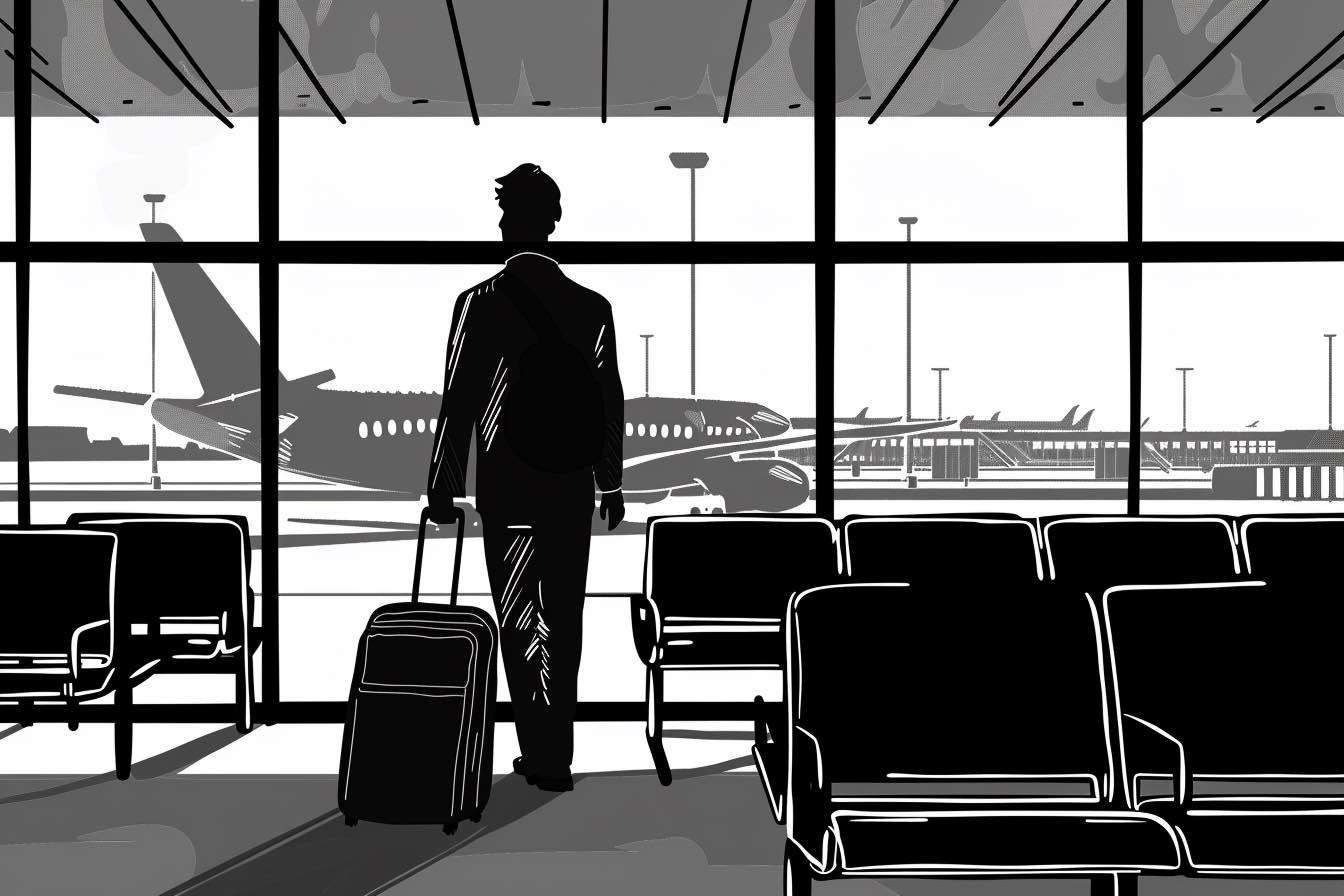Holiday travel is hard. You have to contend with the crowds, the high prices — and the weather.
This holiday season, I’ll probably see it all. Snow in the Pacific Northwest for Thanksgiving. Thunderstorms in Chile for Christmas and stifling midsummer heat in Buenos Aires for New Year’s.
There will be chaos, too. There’s always chaos.
But holiday travel doesn’t have to be so difficult. I’ll tell you how I’m planning to deal with my holiday travel adventure in just a moment. And I’ll also ask the experts to weigh in.
The busy 2023 holiday travel season, which runs from the end of November until early January, will be one for the record books. With wars, Congressional gridlock and post-pandemic “revenge” travel throngs to contend with, you might even be tempted to stay home.
Fortunately, this guide to holiday travel in 2023 will help you get through it. And before I go any further, I have some good news: If you’re reading this now, there’s still time to book a reasonably-priced airline ticket.
When are the travel holidays in the United States?
Holiday travel in the United States centers on three holidays: Thanksgiving, Christmas and New Year’s.
Thanksgiving
If you can imagine the high prices and chaos of summer condensed into a single week, that’s Thanksgiving. It’s an 11-day period that runs from the week before Thanksgiving to Cyber Monday. It is busy — and expensive. The Monday before Thanksgiving and the Friday after Thanksgiving are the best days to travel by car. If you live outside the U.S. and are considering a visit, avoid the last week of November.
Noteworthy event: Congress may stop funding the government on November 15, which could make the Thanksgiving travel season downright unbearable, especially for air travelers. Keep an eye on Washington and consider postponing your trip if things start to get gridlocked before the holiday.
Christmas
The Christmas holiday is spread over a week to 10 days, with Christmas Eve, Christmas Day, and the previous and following weekends affected. The last big travel holiday of the year tends to have the most treacherous weather, at least in the U.S., with ice and snow leading to flight delays and cancellations and snarling traffic in large cities. And since Christmas is celebrated worldwide, the only place you can go to escape the chaos is Asia or the Middle East, where Christmas is not celebrated as a religious holiday.
Noteworthy event: The Christmas holiday has started to encroach on New Year’s, at least in terms of pricing and availability. Don’t expect a lull during the last week of December. Aim for the second weekend in January if you want better prices and less traffic.
New Year’s Day
The first big travel holiday period of the year lasts only a few days, from December 30 through January 2. Of all the winter holidays (Thanksgiving, Christmas, New Year’s), it is the quietest.
Noteworthy event: Toward the end of the year, airlines start their fare sales. The first week of January is often called “dead week” because it’s so quiet, which means more deals on hotels, tours and other activities.
What’s the outlook for holiday travel in 2023?
In terms of prices, the outlook is reasonably good.
Airfares are falling
Thanksgiving airfares are down 14 percent from this time last year (to $268 per ticket), and Christmas airfares are down 12 percent (to $400 per ticket), according to Hopper.
Car rental rates are mostly down, too
Car rental rates average $42 a day during Thanksgiving, a 17 percent decline from last year. The daily rate at Christmas is $10 higher, about the same as last year.
But hotel prices are higher
Hotel rates for Thanksgiving stays in the United States are currently averaging $206 per night (up 9 percent from last year). For Christmas, the average room rate is $233 a night (up 7 percent).
Gas prices will remain steady
The Department of Energy predicts fuel prices will remain steady in the United States, despite the turmoil in the Middle East. Fuel prices should remain steady at around $3.62 per gallon.
What’s less clear is how travel will go during the holidays. Last summer saw scores of flight cancellations and consumer complaints. (We don’t know how many because the Department of Transportation is still busy counting them.)
Here are my seasonal travel guides
- The ultimate guide to holiday travel
- The ultimate guide to fall travel
- The ultimate guide to summer travel
Why do people travel during the holidays?
Most holiday travel is to see friends and family, and it’s usually non-negotiable. You’ll be home for Christmas — or for Thanksgiving. So you have to brave the traffic and the long lines, because the whole family will be there waiting for you. (I get that, and I’m not going to try to convince you to stay home — although that is the only guaranteed way to avoid travel hassles.)
Are the holidays a good time to travel?
No. Whether you drive, fly or take the train, you will probably experience higher prices compared with the fall and crowds in the United States. However, you can avoid the holiday travel craze with a few simple strategies:
Aim for the days in between
The week before Thanksgiving, the two weeks before Christmas, and the week after New Year’s are quieter times to travel. But still, it’s not a slow time of the year. Fares will remain high in comparison with early fall and there will be traffic on the roads. But if you must travel during the holiday period, those are the days to do it. Once you get into the “red” zone of the days immediately before and after the holiday, you will pay more and wait longer. Avoid the red zone at all costs.
Get out early
Board the first flight of the day. Start your road trip at the crack of dawn. Why? Because everyone else will wait to have a leisurely breakfast before leaving, and that’s when the crowds start to build. Another benefit: Normally, the aircraft is parked at the gate the night before, so you will usually have an on-time departure (unless you’re snowed in). These strategies can seriously lessen your stress when you travel during the holidays.
Leave the country
This tactic works best for Thanksgiving. Other countries do not celebrate Thanksgiving in November, and travel will be relatively normal. I’ve visited the Middle East and Europe during the Thanksgiving travel period and escaped the madness of American travel. This strategy also works for Christmas if you are considering visiting a conservative Muslim or Hindu country where they don’t celebrate Christmas.
Look, holiday travel advice is recycled every year and rarely changes. But if there’s something new, you will read it here first.
Is it safe to travel during the holidays?
It depends on where you’re traveling. If you’re staying in the United States, your biggest concern will be a traffic accident. The pandemic persists but is a fading memory for many Americans. If you’re traveling outside the country, you’ll need to pay attention to hotspots like Eastern Europe and Israel, where conflicts are currently making travel conditions dangerous. Here’s my guide to travel safety.
How do I save the most money when I’m traveling during the holidays?
There are no real booking hacks that will allow you to save lots of money, at least according to the latest research.
Scientists studied airfare pricing and found that airlines (and other travel companies) have a fixed and relatively small number of prices that they assign to tickets on each flight. You can get a lower price by booking your tickets early, but once the cheaper fares are gone, no hack will bring them back.
That hasn’t stopped companies from trying.
Kayak, the airfare search engine, has a best time to book feature that has pinpointed the cheapest days to fly during the upcoming holidays. For Thanksgiving travel, the cheapest day to fly this year is November 20, the Monday before Thanksgiving. For Christmas, the least expensive day is Christmas Eve, December 24. And the busiest travel day for domestic holiday travel is December 22 — three days before Christmas.
My advice: Don’t try to game the system. Use a trusted search airfare engine like Kayak, Hopper or Google Flights to find a fare or hotel rate that’s acceptable, and instead of focusing solely on price, make sure you are leaving early and returning early so that you avoid the crowds. You may spend a few more dollars to get to your destination, but you will arrive with your sanity intact.
What places should I avoid during the holidays?
The most popular destinations are also the most expensive ones, according to analysis by Priceline. Here are the most popular expensive destinations for domestic, round-trip airline tickets:
- Dallas ($511)
- Chicago ($478)
- New York ($453)
- Los Angeles ($419)
- Atlanta ($396)
And here are the least expensive places to fly to:
- Salt Lake City ($269)
- San Francisco ($346)
- Denver ($350)
- Philadelphia ($369)
- Orlando ($380)
When should I book my flights for a holiday trip?
The sooner, the better.
Kayak’s analysis suggests the best day to book a Thanksgiving flight is 56 days before the holiday. But you might save a significant amount of money by booking a month ahead. If you miss that deadline, book at least two weeks in advance. And airfares surge seven days before the flight, making them all but unaffordable to most leisure travelers.
Here’s how I’m handling the holiday travel season
This holiday season, as I mentioned before, I have an ambitious travel schedule. I’ll be in Washington State around Thanksgiving. But I planned what I call a “fake” Thanksgiving with my family, arriving a week before the holiday and leaving before the fares start to go up. I estimate the fake-holiday hack saved me $500 in airfare and a few gray hairs. If you can convince your family to move the holiday — even by a few days — you may be able to avoid the worst of the holiday travel mess.
I won’t be home for Christmas; I’ll be in Chile, where it’s summertime. I don’t like bitter cold weather and slush. Maybe I’ll have to contend with a thunderstorm or two en route to my New Year’s destination, Argentina, but it sure beats getting snowed in.
If you can get away from the vortex of ice storms and crowded airport terminals during the holidays, I would recommend doing so. But there are other places you can go. Last year, I escaped to Antarctica while the other travelers were waiting in a crowded terminal. It was a nice place to be.
If I had to stay in the Northern Hemisphere, and if I had to travel during one of the major holidays, I would have aimed for the actual holiday, flying on December 25 or January 1 to save money and avoid the masses of humanity.
Oh, and that advice about not traveling? That’s not for me. Holiday travel is an adventure, and I wouldn’t miss it for anything.
About this story
I’ve written this article so many times — and for so many news outlets — that I’ve lost count. So I decided to create my ultimate guide to holiday travel one last time. (Well, I always say it’s my last time, and then next year comes along, so please don’t hold me to it.) This one is the product of three decades of holiday travel and writing about other people’s holiday travel mistakes. But if I’ve missed something, please let me know. This story was researched, written and fact-checked by Christopher Elliott with help from his friends at Priceline and Hopper. Andy Smith and his team edited the article, and Dustin Elliott illustrated it.



